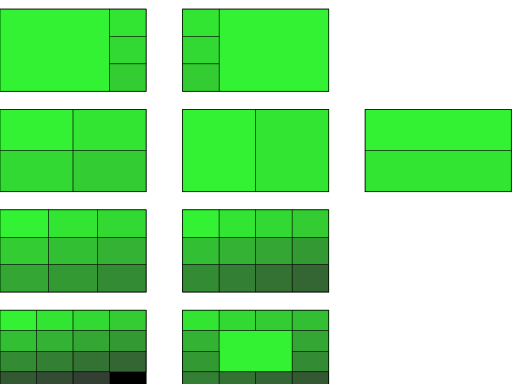Split screen (video games)
A split screen is a display technique[1] in computer graphics that consists of dividing graphics and/or text into adjacent (and possibly overlapping) parts, typically as two or four rectangular areas. This is done to allow the simultaneous presentation of (usually) related graphical and textual information on a computer display. TV Sports used this presentation methodology in the 1960s for instant replay.[2]

The original non-dynamic split screens differed from windowing systems in that the latter always allowed overlapping and freely movable parts of the screen (the "windows") to present related as well as unrelated application data to the user, while the former were strictly limited to fixed non-overlapping positions.
The split screen technique can also be used to run two instances of an application, possibly with another user interacting with the other instance.
In Video Games
The split screen feature is commonly used in non-networked, also known as couch co-op, video games with multiplayer options.
In its most easily understood form, a split screen for a two-player video game is an audiovisual output device (usually a standard television for video game consoles) where the display has been divided into two equally sized areas so that the players can explore different areas simultaneously without being close to each other. This has historically been remarkably popular on consoles, which until the 2000s did not have access to the Internet or any other network and is less common today with modern support for online console-to-console multiplayer support.[3][4]
Split screen is useful for people who want to play with other players, but with only one console. In recent years, split screen hasn't been used very often because the new frontier of video games is playing with other players online, without screen sharing.[3]
History
Split screen gaming is said to have originated in the mid 1980's, there are no notable games that can be found to have it until 1991 when Lemming was released for Commodore's Amiga. It was the first Amiga game to support two simultaneous players with a split screen on the same computer while players used separate mice.[5] However split screen gaming wasn't popularized until GoldenEye 007 in 1997, allowing players to take place in a four person deathmatch on the same screen. The game was said to begin a split screen craze. Continued in 2001 with Halo: Combat Evolved on the XBOX, leading other shooters to pick up the trend, such as Gears of War and Call of Duty.[6]
Advantages and Disadvantages
Advantages
- Users can see where the other players are while playing co-op
- Users can communicate with the players who are near them
- Only one console needed
- Only one copy of the game needed
- No need for internet access or to pay for an internet subscription service
Disadvantages
- Smaller screens
- When playing against each other, players can cheat by looking at the other players' screens, also called 'screen-cheating' or 'screen-peeking'
- Rendering more screens taxes the hardware, often reducing frame rate or graphical detail
- More distraction, especially from game sounds
References
- David Pogue (October 13, 2005). "Split Screen Magic at Two in the Morning". The New York Times.
- Peter Morris (2006). A Game of Inches: The Stories Behind the Innovations That Shaped Baseball. Ivan R. Dee. p. 554.
A 1967 New York Times article reported that split screens ...
- Simon Eriksson (October 19, 2018). "Split-Screen Gaming: What Happened?". The Games' Edge. Retrieved November 10, 2019.
- "Why Split-Screen Gaming is Dying (And Why We Should Mourn It)". Highsnobiety. September 9, 2015. Retrieved November 10, 2019.
- "First split-screen, mouse-controlled game on the Commodore Amiga". Guinness World Records. Retrieved April 19, 2020.
- Contributor, Simon Eriksson (October 19, 2018). "Split-Screen Gaming: What Happened?". The Games' Edge. Retrieved April 19, 2020.